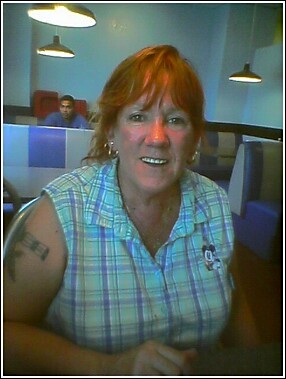Nancy J Swanson
age ~80
from Fort Myers, FL
- Also known as:
-
- Nancy Jane Swanson
- Nancy L Swanson
- Phone and address:
-
9816 Fathom Ct, Fort Myers, FL 33919
2394541718
Nancy Swanson Phones & Addresses
- 9816 Fathom Ct, Fort Myers, FL 33919 • 2394541718
- Baltimore, MD
- Huntingtown, MD
- 4226 Birch Dr, Huntingtown, MD 20639 • 4104902607
Work
-
Position:Machine Operators, Assemblers, and Inspectors Occupations
Education
-
Degree:High school graduate or higher
Name / Title
Company / Classification
Phones & Addresses
Signil Wealth Network, Inc.
Real Estate - Commercial
Real Estate - Commercial
5023 W. 120th Ave., #102, Broomfield, CO 80020
3034283030, 3034283949
3034283030, 3034283949
Chairman, Secretary
The Shores of Caloosa Yacht & Racquet Club, Inc
9854 Caloosa Yacht And Racquet Clb Dr, Fort Myers, FL 33919
12650 Whitehall Dr, Fort Myers, FL 33907
13461 Parker Commons Blvd, Fort Myers, FL 33912
9854 Caloosa Yacht And Racquet Yacht Clb Dr, Fort Myers, FL 33919
12650 Whitehall Dr, Fort Myers, FL 33907
13461 Parker Commons Blvd, Fort Myers, FL 33912
9854 Caloosa Yacht And Racquet Yacht Clb Dr, Fort Myers, FL 33919
President, Director, Vice President
Cardinal Court, Inc
990 8 St S, Naples, FL 34102
NTS COLORADO, INC
17107 San Carlos Blvd, Fort Myers Beach, FL 33931
3311 W 114 Cir #C, Westminster, CO 80031
3311 W 114 Cir #C, Westminster, CO 80031
Secretary
Shoreline, Inc., of Naples
745 12 Ave S, Naples, FL 34102
1692 Gulfshore Blvd, Naples, FL 34102
1692 Gulfshore Blvd, Naples, FL 34102
Us Patents
-
Electively Maximizing And Minimizing The Scattering And Absorption Of Electromagnetic Waves
view source -
US Patent:6704105, Mar 9, 2004
-
Filed:Jul 18, 2001
-
Appl. No.:09/909172
-
Inventors:Nancy L. Swanson - Newburg MD
Barton D. Billard - Fredericksburg VA -
Assignee:The United States of America as represented by the Secretary of the Navy - Washington DC
-
International Classification:G01N 1502
-
US Classification:356336, 356342, 356335, 356337
-
Abstract:A method for controlling both the scattering and absorption of electromagnetic waves. The method is based on prescribing the sizes of the particles that are suspended in a specified medium and a ratio of the refractive indices of the particles and the medium. This method can be used in applications that require maximizing or minimizing scattering of electromagnetic waves. The present method can also be used in applications that require maximizing or minimizing absorption of electromagnetic waves. Further, the invention provides control of backscattering (radar cross section) and, controlling any combination of scattering, absorption and backscattering of electromagnetic waves. Applications for the present method include stealth technology, friend or foe identification, and defensive screening.
-
Electively Maximizing And Minimizing The Scattering And Absorption Of Electromagnetic Waves
view source -
US Patent:6842242, Jan 11, 2005
-
Filed:Nov 12, 2003
-
Appl. No.:10/712387
-
Inventors:Nancy L. Swanson - Newburg MD, US
Barton D. Billard - Fredericksburg VA, US -
Assignee:The United States of America as represented by the Secretary of the Navy - Washington DC
-
International Classification:G01N 1502
-
US Classification:356336, 356342, 356335, 356337
-
Abstract:A method for controlling both the scattering and absorption of electromagnetic waves. The method is based on prescribing the sizes of the particles that are suspended in a specified medium and a ratio of the refractive indices of the particles and the medium. This method can be used in applications that require maximizing or minimizing scattering of electromagnetic waves. The present method can also be used in applications that require maximizing or minimizing absorption of electromagnetic waves. Further, the invention provides control of backscattering (radar cross section) and, controlling any combination of scattering, absorption and backscattering of electromagnetic waves. Applications for the present method include stealth technology, friend or foe identification, and defensive screening.
-
Particle Sizing Technique
view source -
US Patent:62191381, Apr 17, 2001
-
Filed:Jan 10, 2000
-
Appl. No.:9/480535
-
Inventors:Nancy L. Swanson - Newburg MD
Barton D. Billard - Fredericksburg VA -
Assignee:The United States of America as represented by the Secretary of the Navy - Washington DC
-
International Classification:G01N 1502
-
US Classification:356336
-
Abstract:The particle size within a given medium is determined using a single wavelength to confirm the known particles sizes within a dispersion, or determined from two wavelengths to calculate the unknown particle sizes of a dispersion. Three wavelengths may be used to determine the unknown particle size of a dispersion of unknown concentration within a medium. The method and apparatus may be used for mono-dispersions and poly-dispersions.
Isbn (Books And Publications)

License Records
Nancy M Swanson
License #:
RN18784 - Active
Category:
Nursing
Issued Date:
Aug 7, 1975
Expiration Date:
Mar 1, 2018
Type:
Registered Nurse
Nancy M Swanson
License #:
RN18784 - Active
Category:
Nursing
Type:
Registered Nurse
Nancy S Swanson
Phone:
7722251196
License #:
34598 - Active
Category:
Health Care
Issued Date:
Oct 29, 2001
Effective Date:
Mar 15, 2007
Expiration Date:
Aug 31, 2017
Type:
Massage Therapist
Nancy J Swanson
Address:
9816 Fathom Ct, Fort Myers, FL
License #:
9205440 - Expired
Category:
Health Care
Issued Date:
Aug 5, 2003
Effective Date:
May 6, 2015
Expiration Date:
Apr 30, 2013
Type:
Registered Nurse
Googleplus

Nancy Swanson
Education:
University of South Carolina, The Citadel
Bragging Rights:
Star Educator, Professional Development, Instructional Technology training, Technology Teacher

Nancy Swanson
Relationship:
Married
About:
Nancy swanson[boudreau] live in manchester nh.married.love horses and animals hikeing and the out doors;boating fishing ext went to west side school.

Nancy Swanson

Nancy Swanson

Nancy Swanson

Nancy Swanson

Nancy Swanson

Nancy Swanson
Plaxo

Nancy Swanson
view sourceProduct Manager at Hewlett Packard

Nancy Morrell Swanson
view sourceYoutube
Classmates

Nancy Martinez (Swanson)
view sourceSchools:
Gresham High School Gresham OR 1960-1964
Community:
Dave Stewart, Patricia Sherman, David Stewart, Geary Fitzgerald, Frank Kucera, Carolyn Smith
Biography:
So, much, so little time. Singerentertainer, Caregiver, mother of 3, 6 grandchildr...

Nancy Pullin (Swanson)
view sourceSchools:
San Pasqual Valley High School Winterhaven CA 1964-1968
Community:
Jeannette Boekenoogen, Carol Navo, Pete Martinez, Sheila Cannon

Nancy Morin (Swanson)
view sourceSchools:
Osseo High School Osseo MN 1985-1989
Community:
Mark Williams, Heather Erickson, Scott Peterson, Megan Mahony, Holly Anderson, Cheryl Kopernick, Colleen Gorman, Eric Swanson, Luke Bulyca, Ruth Brandt, Sherrie Prose, Craig Mader

Nancy Curtis (Swanson)
view sourceSchools:
Horace Mann School Gary IN 1961-1965
Community:
Dennie Williams, Tonya Harrell, Serretha Ransom

Nancy Swanson (Dowling)
view sourceSchools:
Curtis High School Staten Island NY 1979-1983
Community:
Gloria Vanvalen, Margaret Bianco

Nancy Epperson (Swanson)
view sourceSchools:
San Manuel High School San Manuel AZ 1972-1976
Community:
Tina Le Grand, Charmagne Snider

Nancy Swanson (Wennerlund)
view sourceSchools:
Cloquet High School Cloquet MN 1960-1964

Nancy Walz (Swanson)
view sourceSchools:
Deer Creek High School Deer Creek MN 1965-1969
Community:
Bonnie Brown, Sandy Buchanan, Elizabeth Roberts

Nancy McClain Swanson
view source
Nancy Hanaford Swanson
view source
Nancy Schwan Swanson
view source
Nancy Cederstrom Swanson
view source
Nancy Sharry Swanson
view source
Nancy Schleicher Swanson
view source
Nancy Dowling Swanson
view source
Nancy Garner Swanson
view sourceFlickr
Myspace
Get Report for Nancy J Swanson from Fort Myers, FL, age ~80




















